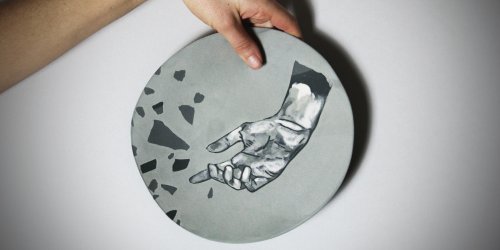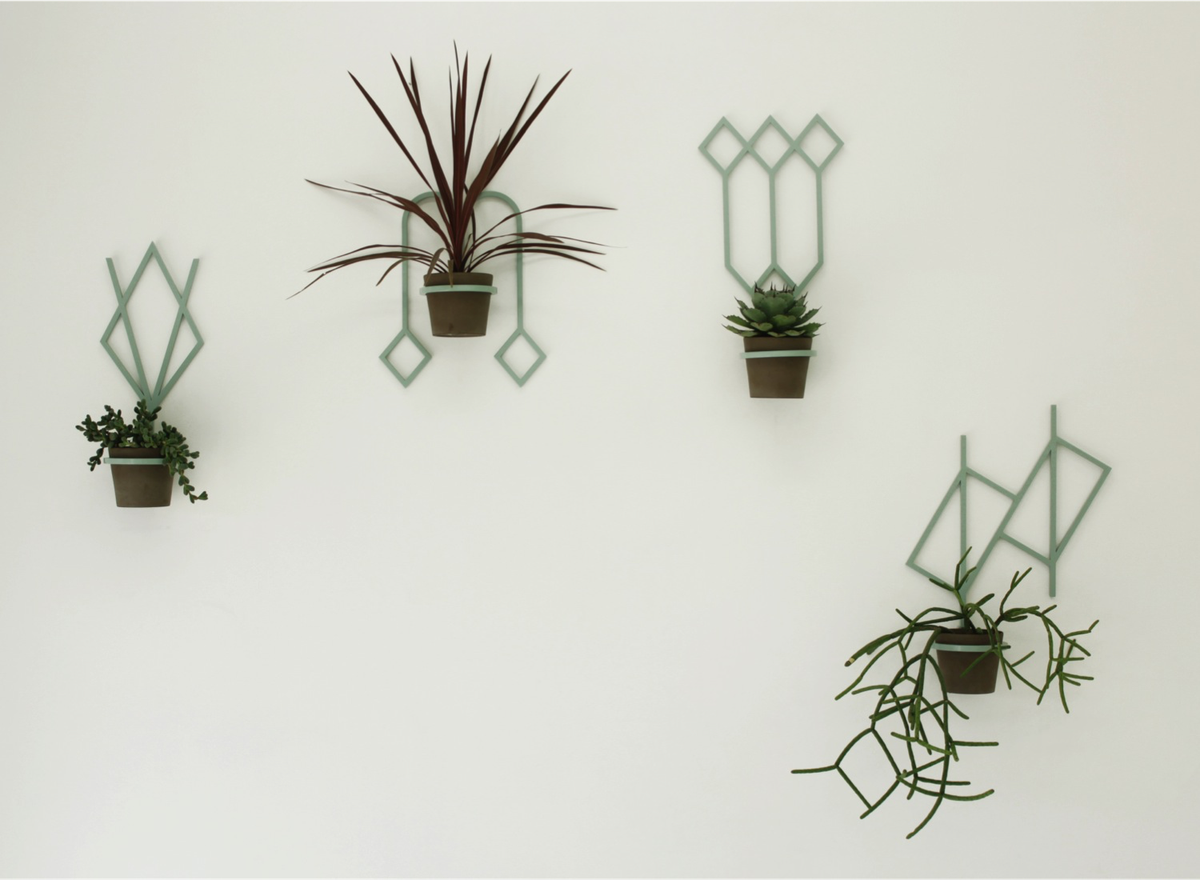Image: Jessie Mitchell, Held (2015) Inlay ceramic stoneware, 24cm diameter. Courtesy the artist.
How would you describe your practice? What are you currently working on?
In regards to my practice I was recently described as being something of a ‘contemporary polymath’, which definitely made me smile. I have always sat (sometimes uncomfortably) at the intersection of art, craft and design, haunted by the saying ‘Jack of all trades’. In recent years I have been less worried about defining my practice and have focused my energy on what I enjoy; material-driven research and collaboration.
This has developed into some exciting projects and I am currently packing my bags ready to visit Vietnam for an intensive week-long residency. This trip will conclude an ongoing collaboration with Swedish designer Mina Karami. Mina and I met at the Hanoi Design Centre in 2013. We have been working on a collection of hand painted ceramics and are excited to see this into production in October.
Who do you think is forging interesting new directions for the craft and design field?
I am a huge fan of the Fabric Workshop and Museum in Philadelphia. I’ve been lucky enough to visit the space on a few trips to the US and their book is never far from my desk. The Fabric Workshop and Museum houses nearly forty years of experimentation and adventure in textiles, during which time artists, printers, apprentices, and patrons with vision have explored the use of industrial process – repeat yardage – as a new art form. Their goal is to explore, take liberties, to be a studio and laboratory of new design, unhampered by rules and precedents. It is one of the few places that still undertake a rigorous apprenticeship program which I think our industry needs more of!
You have received a travel bursary to attend the National Craft Initiative event Parallels: Journeys into Contemporary Making at the National Gallery of Victoria in September, what do you hope to achieve by being part of this event? Which of the speakers are you most interested in hearing from?
I am particularly interested to see Andrea Trimarchi and Simone Farresin, Studio Formafantasma. I have followed their studio for some years and appreciate their playful approach in combining unconventional materials and challenging function and aesthetics. I feel my practice is moving towards forming further links with craft culture beyond Perth and would like to hear their ideas and experience in response to issues such as the relationship between tradition and local culture, critical approaches to sustainability and the significance of objects as cultural conduits.
You have worked with traditional craft practitioners in Hanoi, Vietnam – tell us about that project and how it has informed your practice?
There are a lot of opportunities in Hanoi for designers to work collaboratively with the local craft industry. Organisations like Vietcraft recognise a need for traditional Vietnamese handicraft producers and exporters to add value to their products and increase their global competitiveness through innovative product design and cross cultural collaboration.
Working directly with the local craftspeople in Hanoi has been an incredible experience. Having trained originally in textiles, for me it has been an invaluable opportunity to gain first hand experience of traditional craft processes in practice. Vietnamese culture is one that values and celebrates craft, and being immersed in this environment has had a positive effect on how I perceive my own practice.
What are the challenges that lie ahead for contemporary Australian craft and design?
Challenge is an important factor in driving any industry forward. I feel that Australia is still finding its way in terms of establishing a strong, healthy craft and design industry. Perth has taken a few steps back in recent years, with Curtin University's closure of both its ceramics and textiles courses. Local organisations who were once advocates for the craft sector have shifted their focus with the closure of spaces like the Midland Atelier, in favor of large-scale street art productions. My biggest challenge is finding affordable studio space and industry connections to be able to live and make work in Perth.








